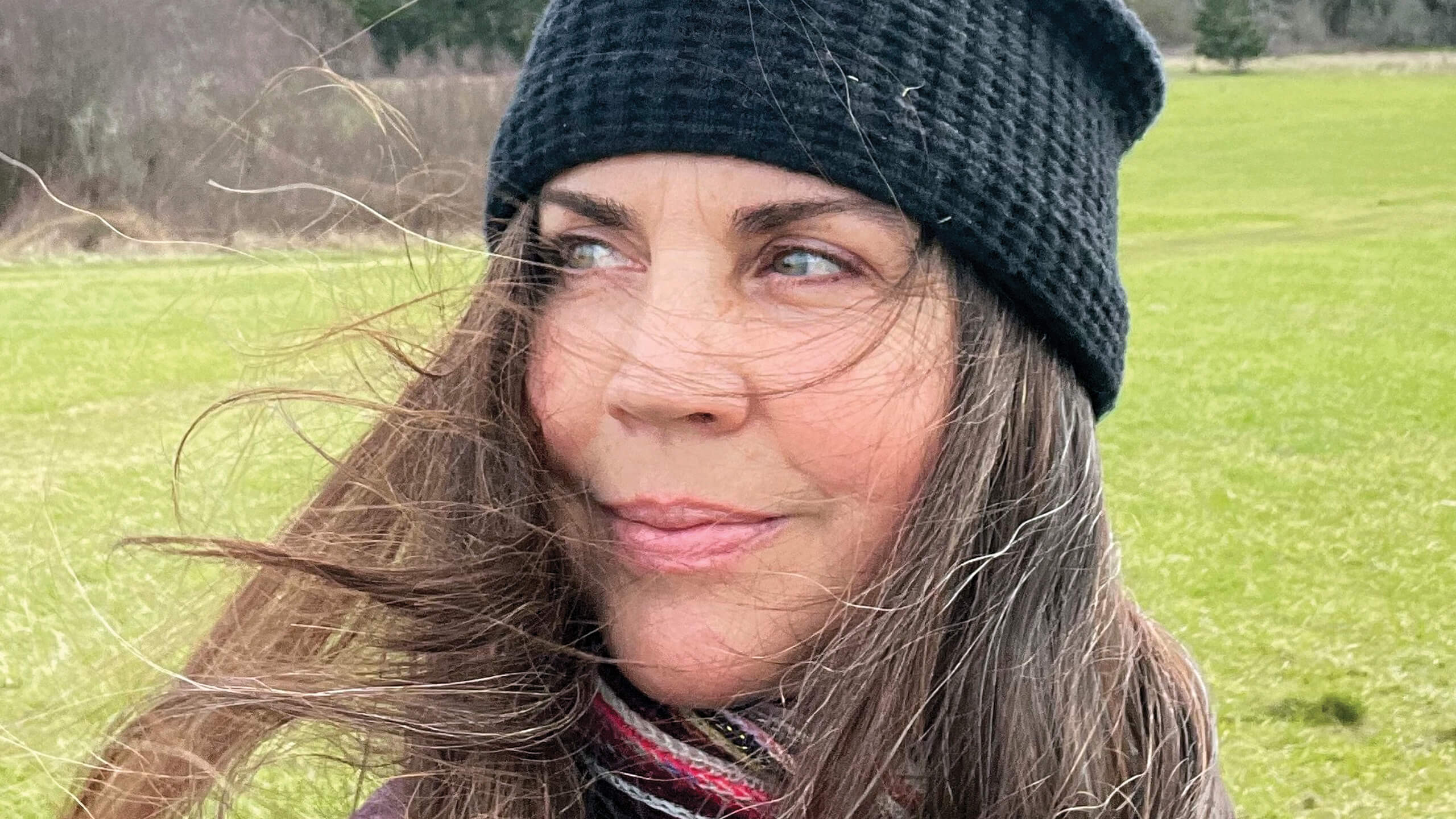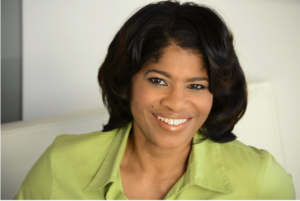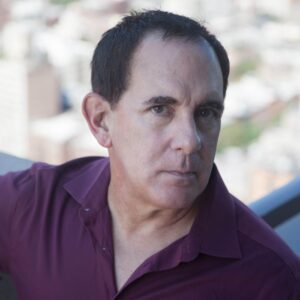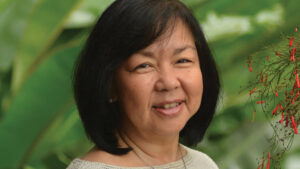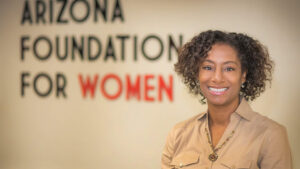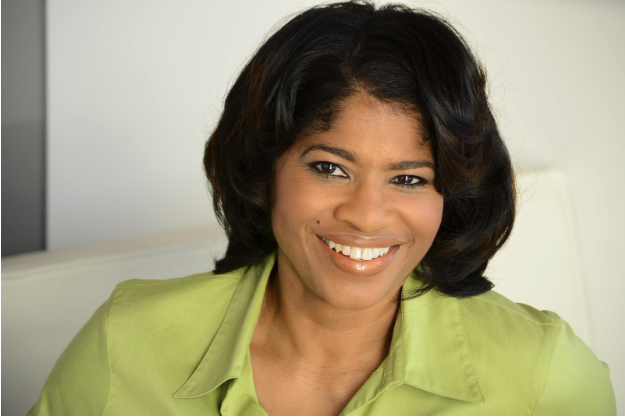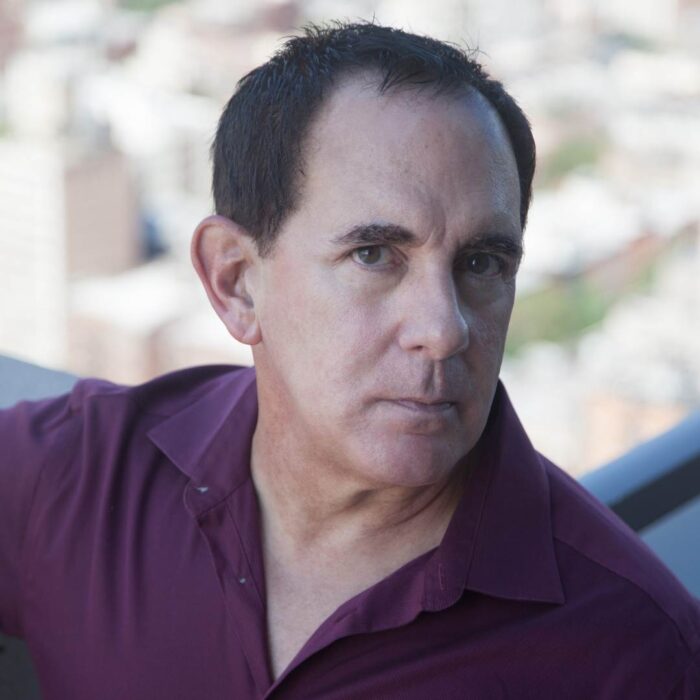An Interview with Kat Mische Elle
Jeanne Simmons was born in coastal New Hampshire in 1964. She graduated from the Maine College of Art in 1991 with a BFA in Sculpture. She attended the Skowhegan School of Painting and Sculpture the following summer.
In 1992, Jeanne moved to Chicago to attend graduate school at the School of the Art Institute of Chicago. She moved to the Pacific Northwest shortly, eventually settling on Vashon Island, WA, where she met her husband, Gunter Reimnitz, a sculptor. Jeanne and Gunter moved to Port Townsend, WA, in 1999, where they raised their two beautiful kids. She has devoted her life to parenting and the creative process ever since.
Jeanne, did you always know you would be an artist?
I grew up admiring artists immensely, but I never believed I might be one or become one. Fortunately, I discovered a trail of breadcrumbs that eventually led me to art school in my early 20s. My time at the Maine College of Art and Design (formerly the Portland School of Art) was life-changing. It set me on a trajectory of curiosity, observation, and creative expression that has since defined my life. I briefly attended the School of the Art Institute of Chicago as a graduate student in sculpture in 1992. I quickly discovered that urban living was not conducive to my well-being. I followed my nose and intuition to the Pacific Northwest, where I have resided ever since and where the natural world inspires me. I walk the beaches, fields, marshes, and woods of the Olympic Peninsula daily, along with my canine companions who lead the way. My time in nature sustains, stabilizes, and inspires me. I hope to describe my devotion to and love of the natural world with my work.
I hope to communicate my belief that humans are an extension of the natural world, just as the natural world is an extension of us.
I hope to describe the possibility of a harmonious rapport between us and nature and to remind the viewer that there can be no “us” without “it.”
What is your art currently focused on?
The art I am making now is, in many ways, a product of my anxiety about climate change. I spend a great deal of time thinking about, worrying about, and losing sleep over the environmental changes we are already witnessing and the changes that are sure to come. Part of how I cope with this anxiety is to spend time in nature. I observe it, revel in it, embed myself in it, love it, and grieve in it if I have to. My experiences in nature heal me daily. I find my equilibrium there. When I manage to create something in nature that adequately describes my reverence for it, well, that is a perfect day and what I would describe as a peak experience. These experiences bring me joy and satisfaction, which help me to continue to show up in the face of all of life’s abominable tragedies with courage and purpose.
My mission is to describe and honor the interconnection between humanity and the natural world, as there can be no “us” without “it,” and we are treading precariously close to our demise. It is my personal belief (and mantra) that I am (we are) an extension of the natural world, and the natural world is an extension of me (us). My work strives to be a visual depiction of this sacred exchange. I hope to remind the viewer that we belong in nature and are part of nature’s very fabric.
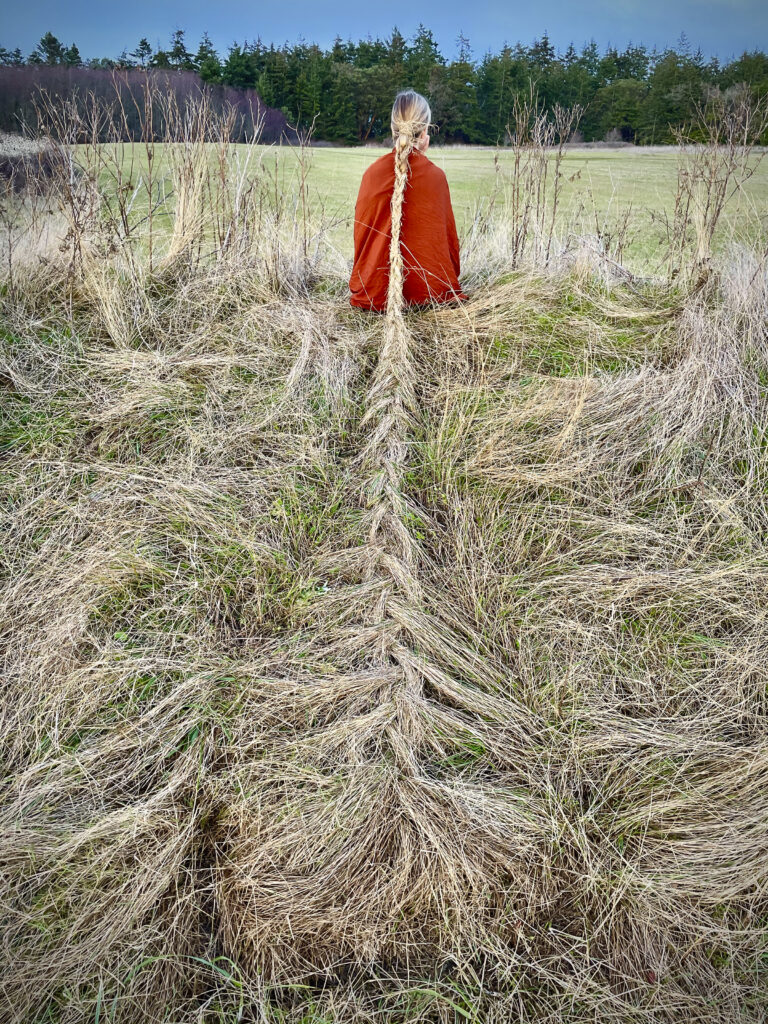
How does your artistic process honor the ecosystem you use while creating?
My work reflects my reverence for the natural world. I harvest and work with beautiful materials, generally considered weeds or residue. That is to say. They are not considered precious (although they are to me). Those materials include grass, ivy, Queen Anne’s lace, kelp (that I find washed up on the beach), tiny bits of moss, dried fennel, fern, scavenged cedar bark, and the occasional flower. My projects do not require me to alter the landscape. When I finish a project, there is little to no evidence that I was ever there. I work with a “leave no trace” mindset. The materials that I work with decompose after the completion of a project. Therefore, I create no waste. I generally do not have to buy anything to create my work besides gloves and clippers, although I have purchased fabric for a couple of projects, which I hold onto and reuse. I am grateful to have found a way of working that aligns with my ecological concerns and priorities. My goal is to elevate the natural world through my work, not denigrate it.
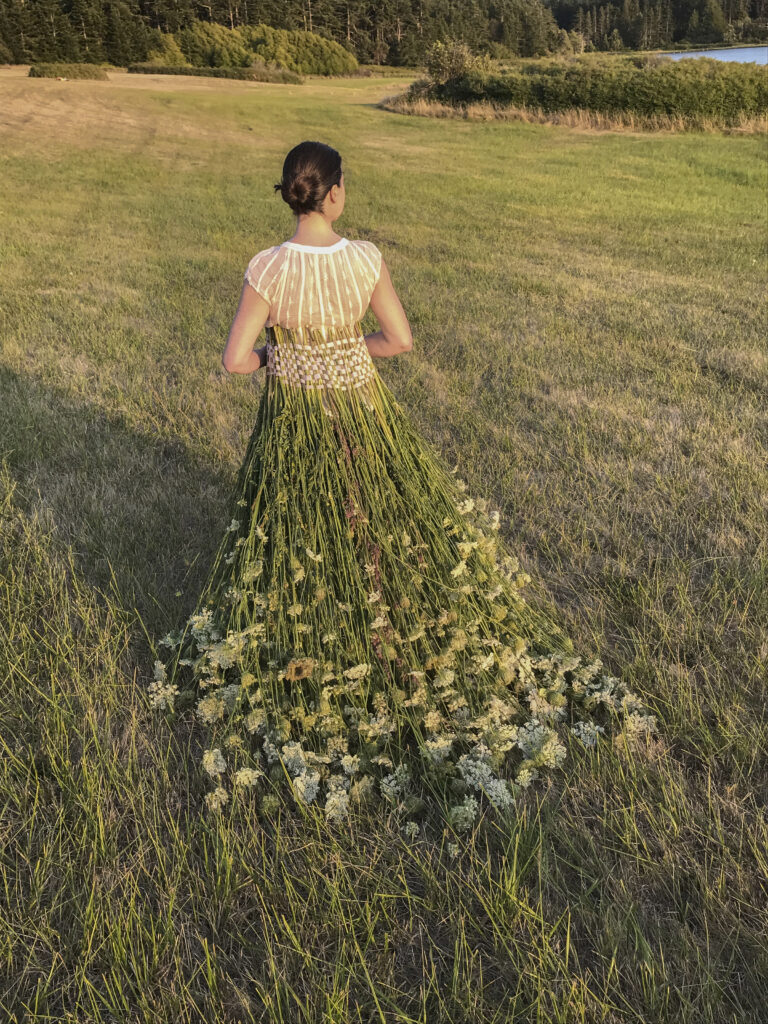
What do you experience during the creation process?
The creative process is my favorite topic of discussion. It’s my favorite thing to think and wonder about. And when I am blessed with an interesting idea for a creative project, it feels like a gift from the gods. I love listening to other makers’ stories about their creative processes, whether they are musicians, comedians, visual artists, dancers, writers, or scientists. Anyone whose work requires imagination, intuition, and creativity has my undivided attention.
For myself, I know that I have to be looking for something. I need to pay close attention and walk around to find an idea. So there is a kind of courtship process. Very often, a certain material stimulates an idea or suggests a project to me. Sometimes it’s a specific place or landscape or something atmospheric. Sometimes the idea will come to me whole. Other times I need to nurse it along and flush it out. I mull and analyze. If the idea survives my scrutiny, I might set out right away to make the piece.
Occasionally I do a project in the studio and bring it to a location to document a model (I think of my models as surrogates, as they have an experience I wish I could have). Most of the time, I make the piece on-site and document it the same day. When the day finally comes to make and/or document the piece, it’s a big deal. It means that my schedule, my model’s schedule, the weather, the light, the season, and sometimes the tide have all come together in an almost holy (in my mind) union. And then, the whirlwind of collecting my materials (usually on site), building the piece (often directly on my model), documenting the piece, and then deconstructing the piece all happen in rapid succession. Afterward, I’m exhausted, exhilarated, high as a kite, trying to piece together what just happened, satisfied for a little while, and enormously grateful to have completed something I consider part of my mission, raison d’etre, and life’s work.
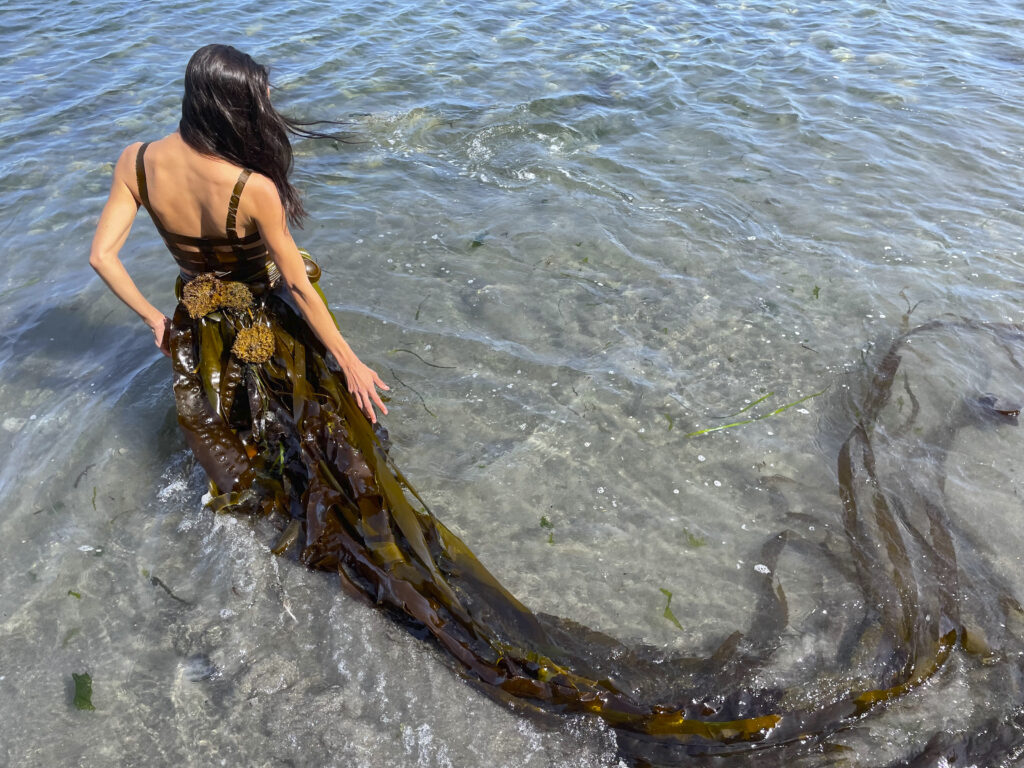
What are your concepts of sacredness and violation?
In trying to find the terminology that best describes the forces that have led us to our current social and environmental predicament, I’ve settled on what bell hooks describe as a white supremacist capitalist patriarchy. However, I think white supremacist capitalist heteropatriarchy works even better. This is a mindset of overarching violence and systemic discrimination inflicted upon the natural world, women, and all marginalized groups. Long and shocking histories of violence and violation have brought us to this precarious moment as we now teeter toward self-annihilation.
It’s difficult to be a sensitive person born into a cult of consumption and exploitation, and we are all required to make sense of it and survive it the best we can. My work is a practical invention that has served as a personal antidote to the crushing weight of unfettered patriarchy. It is a counterbalance to the destructive forces that consume and exploit the Earth’s resources and people. I think my work might resonate with some people because it depicts the possibility of an intact and harmonious relationship between humans and nature. Humans are embedded in nature, comfortable in nature, wearing nature, and celebrating nature. I think that we long for the sacred connection with the natural world that many of our ancestors once knew and that we are looking for a way back to it before it is too late.
Does art need to last?
My work is temporary. It generally exists very briefly in three dimensions and is then relegated to the realm of digital photography. It’s been a long stretch for someone who identifies first and foremost as a sculptor.
Who has been an inspiration on your journey for artistic expression?
When I started having these impulses to embed women into the landscape, I was fortunate to have Andy Goldsworthy as a role model. To the best of my knowledge, Mr. Goldsworthy doesn’t work with human models, but he certainly works in nature, with natural materials, and often in a fleeting way. While I know Mr. Goldsworthy has also created large-scale permanent works, his early works have inspired me enormously and demonstrated that art could be temporary. Art can melt. The tide can wash it away. The wind can blow it asunder. And it can still be art. When I set out into nature with my gloves and clippers and maybe a knife or trowel, I (humbly) feel an affinity with Mr. Goldsworthy. He is my unofficial Patron Saint of Ephemeral Creations in Nature. I like that my work eventually rots and becomes part of the landscape I hold in such high esteem. I am glad I am not adding to the clutter of many objects taking up space on this overwrought land.
You can see more of Jeanne’s amazing work at:
jeanneksimmons.com and @jeanneksimmons

